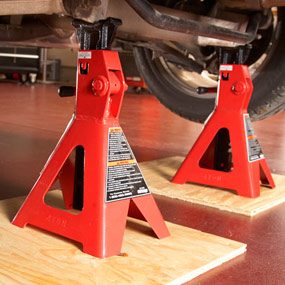Leaving my 'X' in fla in my garage for 5 mo..What should i do to protect it & what should i expect
Thanks in Advance
Thanks in Advance
You can install our site as a web app on your iOS device by utilizing the Add to Home Screen feature in Safari. Please see this thread for more details on this.
Note: This feature may not be available in some browsers.
1. plugin as you would every day.Leaving my 'X' in fla in my garage for 5 mo..What should i do to protect it & what should i expect
Thanks in Advance

that's quite a project!Neither my hubs/I would tackle that....maybe i'll have to come up with some alternatives thanx1. plugin as you would every day.
2. If you store your car for three months or more, putting it on four jack stands is a good idea to prevent tire flat spots. Ensure there's a piece of plywood to pad the floor, or your floor might have depression marks from the jack stands.


I have kept both my Tesla's plugged in and have travelled out of the country for 45 days, no issues related flat tire spots.Just keep it plugged in. I wouldn't worry about flat spots.
Modern radial tires do not get flat spots like cars did decades ago.
During 3 years of covid 2 sportscars and a 4Runner simply did not move.
None showed any flat spots once finally driven. I would not
worry about 6 months non-moving at all.
I should add that the sportscars were hard to push (by hand) from rest
after their long vacation (the first 12 inches). But on the road?
No issue. The 4Runner was always too hard to push, period.
I would suggest you check tire pressures before going on a trip
though (but then one should always do that).
Absolutely eave the charge level at 50%, no greater. Definitely keep it plugged in.
what is the purpose of keeping a car plugged in if you are away for awhile?I have kept both my Tesla's plugged in and have travelled out of the country for 45 days, no issues related flat tire spots.
what is the purpose of keeping a car plugged in if you are away for awhile?
aren't you afraid of elec spikes etc?
Because the car always consumes power. It is not possible to actually turn it totally off. If you do not keep it plugged in, you will likely come back to a very dead Tesla.why keep it plugged in


